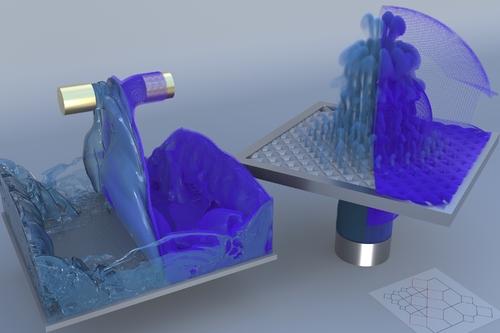Pre-recorded Sessions: From 4 December 2020 | Live Sessions: 10 – 13 December 2020
4 – 13 December 2020
Pre-recorded Sessions: From 4 December 2020 | Live Sessions: 10 – 13 December 2020
4 – 13 December 2020
#SIGGRAPHAsia | #SIGGRAPHAsia2020
#SIGGRAPHAsia | #SIGGRAPHAsia2020











Date/Time:
04 – 13 December 2020
All presentations are available in the virtual platform on-demand.
Lecturer(s):
YUWEI XIAO, Shanghai Jiao Tong University, China
SZEYU CHAN, University of Pennsylvania, United States of America
SIQI WANG, New York University, United States of America
BO ZHU, Dartmouth College, United States of America
XUBO YANG, Shanghai Jiao Tong University, China
Bio:
Description: Enabling adaptivity on a uniform Cartesian grid is challenging due to its highly structured grid cells and axis-aligned grid lines. In this paper, we propose a new grid structure -- the adaptive staggered-tilted (AST) grid -- to conduct adaptive fluid simulations on a regular discretization. The key mechanics underpinning our new grid structure is to allow the emergence of a new set of tilted grid cells from the nodal positions on a background uniform grid. The original axis-aligned cells, in conjunction with the populated axis-tilted cells, jointly function as the geometric primitives to enable adaptivity on a regular spatial discretization. By controlling the states of the tilted cells both temporally and spatially, we can dynamically evolve the adaptive discretizations on an Eulerian domain. Our grid structure preserves almost all the computational merits of a uniform Cartesian grid, including the cache-coherent data layout, the easiness for parallelization, and the existence of high-performance numerical solvers. Further, our grid structure can be integrated into other adaptive grid structures, such as an Octree or a sparsely populated grid, to accommodate the T-junction-free hierarchy. We demonstrate the efficacy of our AST grid by showing examples of large-scale incompressible flow simulation in domains with irregular boundaries.
